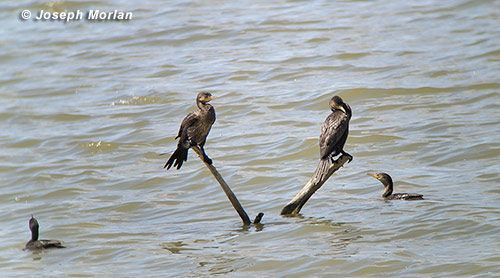
Neotropic Cormorants (Phalacrocorax brasilianus)
Lack Road, Salton Sea, Imperial County, CA
28 March 2013
Joseph Morlan

Dan Singer and I followed Guy McCaskie and Therese Clawson around the south end of the Salton Sea. Along the seawall at Lack Road we were able to study ten different Neotropic Cormorants as follows: one with Double-crested Cormorants perched on snags protruding from the water near the north end of Lack Road, seven in the area around the intersection of Lack and Lindsey Roads, and two more with Double-crested Cormorants on snags at the west end of Young Road. I was able to document eight of these. The photo at the top right shows four individuals at Lack and Lindsey. A fifth bird flew in from the south and eventually flew north to join two more distant birds on snags. I did not attempt to photograph those two, but I did photograph two more at the end of Young Road (photos at bottom left).
The single perched bird below left and below right is bird #1. Birds #2-5 are in the group with two perched and two swimming at top right. Bird #6 is perched with wings spread below left.

A comparison photo showing bird #1 with a Double-crested Cormorant is at the bottom right.
Description
The following description is based on memory and on photos:
These were small cormorants, decidedly smaller than adjacent Double-crested Cormorants. They appeared to have noticeably longer tails, thinner necks and duller yellow color to their bills and gular pouches. In addition, they tended to lack obvious yellow in the lores, although at close range some birds seemed to have a tinge of greenish-yellow in that area depending on the light. The shape of the gular pouches were different, extending back to an acute point behind the eyes and reduced yellow in the throat so that when facing us, there was the effect of a smile. Some birds showed a pale outline to the gular. The Double-crested Cormorants lacked the acute angle at the gape and had more extensive yellow on the throat not producing the smile effect. A comparison photo showing bird #1 with a Double-crested Cormorant is at the bottom right.
All the Neotropic Cormorants appeared to be immatures, presumably hatched in 2012. This plumage differed on average from immature Double-crested Cormorants in that they had a dark foreneck and mottled belly recalling the pattern on immature Brown Booby. Immature Double-crested Cormorants usually have the front of the neck much paler and lack the mottled effect on the belly. Photos show that some of the birds had worn rectrices. At least one (bottom left) seemed to be molting mantle feathers.
Birds #7-8 were not photographed by me, although Dan Singer may have photos. #6 flew in from the south at the intersection of Lack and Lindsey and was identified by direct comparison with the four other individuals already present. It then flew north joining two other more distant cormorants to the north which were resting on snags. When seen together, all three were the same size and shape and we felt confident that all three were Neotropic.
Two additional birds seen in direct comparison with Double-crested Cormorants at the west end of Young Road brought the total count to ten, apparently a record high for California.
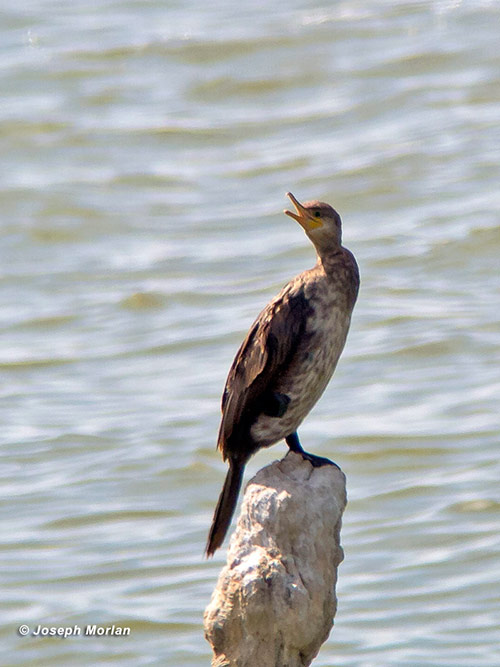
Subspecies
These birds are presumed to be the Texas and Mexican race P. b. mexicanus. The nominate race ranges from Costa Rica through South America.
Status in California
There are thirty five previously accepted records of this species in California, mostly from Imperial County. This species has been undergoing a significant range expansion into adjacent Arizona where it now outnumbers Double-crested Cormorants in suitable habitat at places like the Gilbert Water Ranch. Historically it was considered a rare vagrant to Arizona. A similar range expansion appears to be happening in the Imperial Valley at the Salton Sea and along the Colorado River where records continue to increase. Our count of 10 birds appears to be the largest number ever recorded in California.

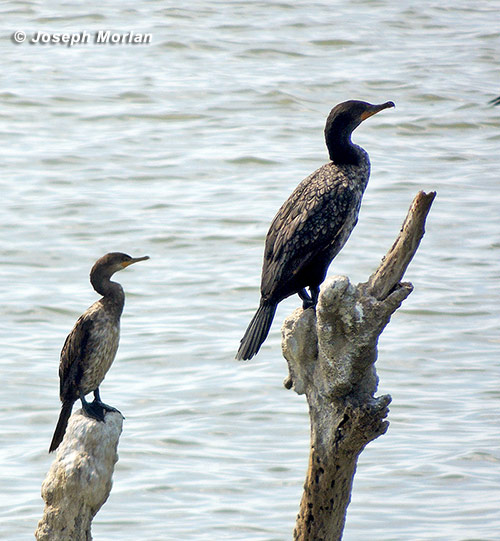
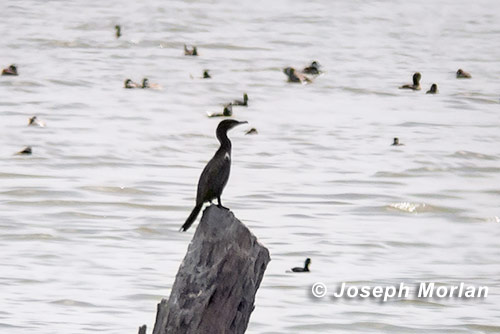
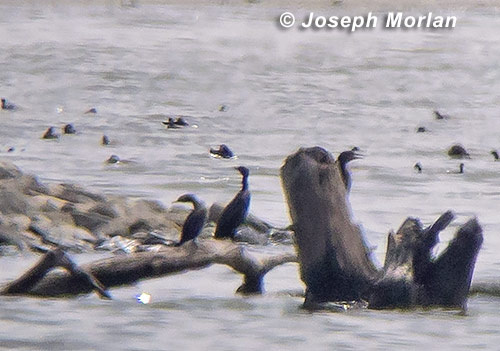
External Links